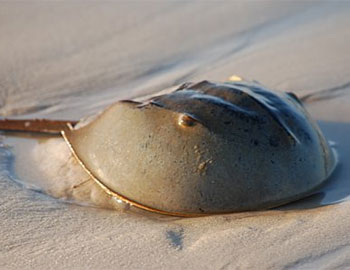|

Atlantic horseshoe crab, Limulus polyphemus. (Photo: cangrejo-cacerola.wikispaces.com CC BY-SA 3.0)
Atlantic horseshoe crab commercial capture assessed
 MEXICO
MEXICO
Monday, October 07, 2013, 00:30 (GMT + 9)
A team of researchers from the School of Economics at the Autonomous University of Yucatan (UADY) assesses the possibility of commercially exploiting the marine species known as Atlantic horseshoe crab in Progreso and Chelem waters.
According to scientists, these areas can be used for breeding and marketing through a management unit (MU) for the conservation of wildlife.
The Atlantic horseshoe crab (Limulus polyphemus) is a marine resource of the Tertiary period that has survived. About four years ago, it was considered in "extreme preservation" for its conservation so the government decided that it could not be captured. The Federal Attorney for Environmental Protection (Profepa) is the agency responsible for ensuring that this regulation is respected.
However, this crustacean could be used and caught through a MU, with support from the federal Executive and Rural Development Secretariat of the State, in addition to potential stakeholders.
In the Yucatan region, the Atlantic horseshoe crab is used as bait to fish for octopus.
The breeding area of this resource extends from Chelem up to part of Chicxulub, which is where it is most abundant, Sipse reported.
The Atlantic horseshoe crab is a specimen that can reach a length of 60 centimetres and weigh up to 1.8 kg. It is a nocturnal animal and usually buries in the ground during the day, as WAZA details on its website.
Overnight this specimen eats bivalve mollusc, worms and other benthic invertebrates, and fish pieces that it is digging in the earth.
According to scientists, it defends itself by closing in its own shell or hiding in the ground.
By Analia Murias
editorial@seafood.media
www.seafood.media
|



